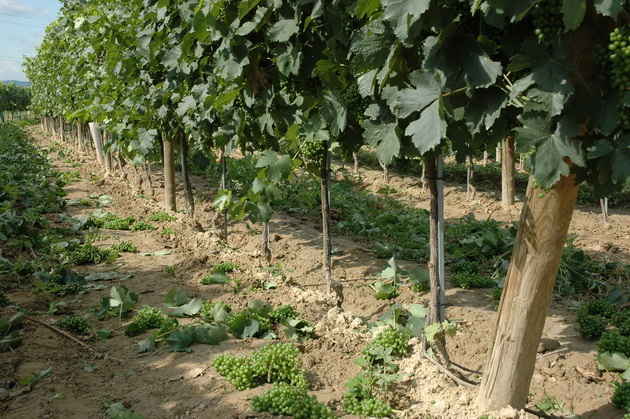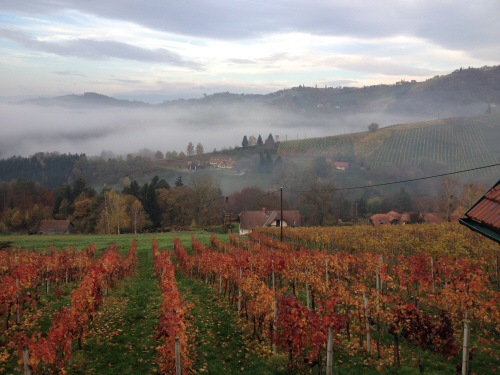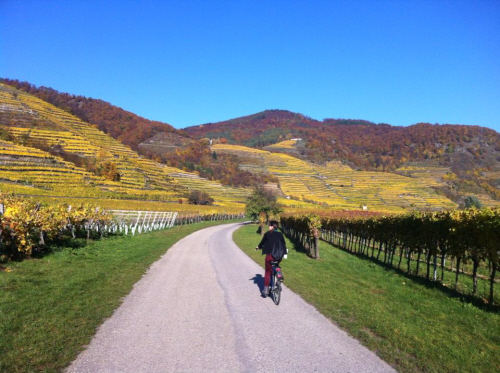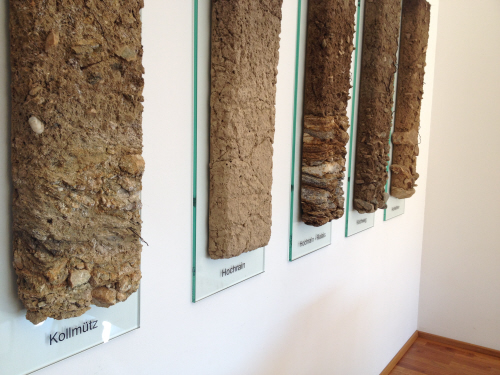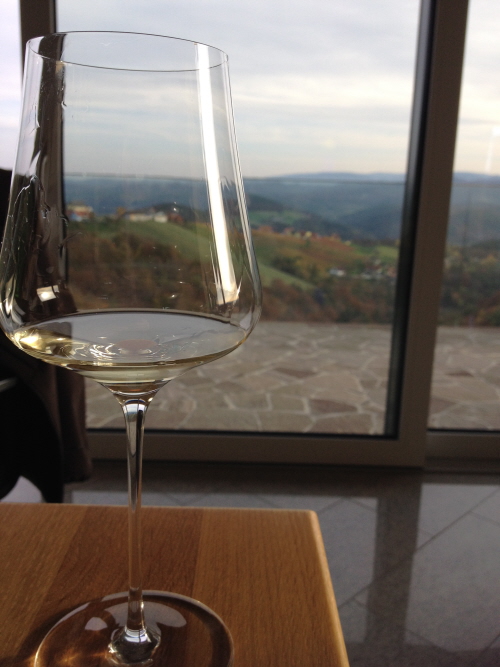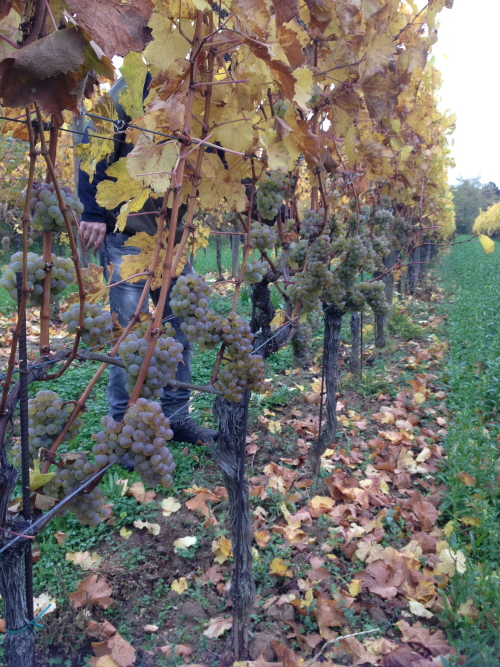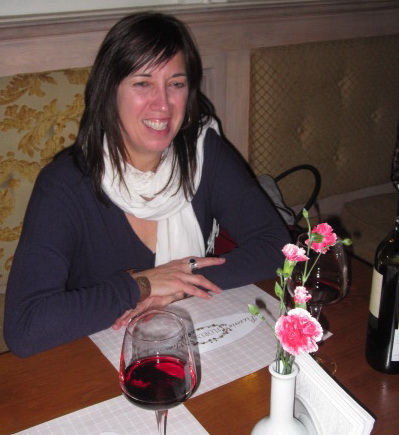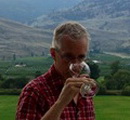We were joined by special guest, Rudi Rabl, founder and winemaker at Austria’s Rabl Winery discussing the Ultimate Wine for Spring.
Click on the arrow above to watch the video.
Listen to Rudi’s story about becoming the 12th generation of Rabl winemaking.
Learn about the flexibility of Grüner Veltliner.
Discover the best pairings for Grüner Veltliner.
If you’d like to read the 33 comments for this tasting, or make a comment yourself, visit:
https://www.facebook.com/natdecants/videos/10155115055649845/
You’ll find upcoming and past Live Tasting Videos here.
Here’s a sampling of our lively discussion from our tasting…

Rabl Langenlois Grüner Veltliner 2015
Kamptal D.A.C., Austria
Rabl Kittmansberg Grüner Veltliner 2015
Kamptal D.A.C., Austria
Rabl Terrassen Gruner Veltliner 2015
Kamptal, Austria
Rabl St. Laurent 2012
Kamptal, Niederösterreich, Austria
Rabl Spiegel Grüner Veltliner 2015
Kamptal D.A.C., Austria
Rabl Käferberg Grüner Veltliner
Kamptal Reserve, Austria
Rabl Vinimum Optimum Trockenbeerenauslese Traminer 2007
Austria
On a previous Sunday Sipper Club via Facebook Live Video, we tasted a variety of wines from Austria.
The discussion was lively, insightful, and many times, humourous :)
You can read the 117 comments (!) here and even post one yourself.
The Facebook Live Video show was simultaneously broadcasted on YouTube Live Steam … gotta love technology!
Meanwhile, the weekend before last, 30 wine writers and sommeliers gathered to taste a large selection of Austrian wines. You’ll find their video comments below.
Rachelle O’Connor
Wine Blogger & Judge
And as if this isn’t enough, here are 9 radical reasons to drink Austrian wines from sommelier and wine writer Lesley Quinn …
“Austria makes wine? Aren’t they known for beer?” This is the typical response I get when I suggest an Austrian wine to a friend. My answer is always “Yes they make a great brew, but their wine is among the best in the world.” And here are 9 radical reasons why you should give Austrian wine a chance.
1. Crystaline Purity
We love a delicious chunk of salmon dressed up in a delicate creamy caper beurre blanc, maybe even cooked on a cedar plank. However, a sliver of salmon sashimi is pure. It allows you to focus on the satin texture of the fish, to really taste just the salmon in all its glory.

To me that is what stands out about wine from Austria, and in particular the wines of Rudi Pichler, a producer from the Wachau Valley. I have likened drinking his wines to being like diving into a crystal clear lake. Your mouth feels so refreshed and clean after a sip of his wines, it can be difficult to stop sipping.

The texture of the wines, that is the way they feel in your mouth which is luxuriously silky smooth is not oily. The wine doesn’t coat your tongue, like the way a piece of salmon all done up in a sauce can. It just glides over your mouth, leaving you with a impeccably pure finish.
2. Terroir
A word we see quite often in description of the world’s finest wines, but many people have a hard time wrapping their brains around the concept. I think of terroir perfected wines being like a pristine beach day. You pack up the car and get out of the city in record time. When you arrive at the beach the weather is optimum, and there is hardly a single other person to invade your space.
A light breeze is blowing, just enough to keep you cool, but not enough to blow the sand around, and there isn’t a cloud in the sky. The ocean is refreshing yet still warm enough that you can stay and swim for as long as you want. Bonus – there is not a jellyfish or stray piece of seaweed in sight. The drinks stay cold, the sandwiches soggy free. You drive off as the sun is setting, an intense combination of pinks, reds, and oranges; thankful for such a perfect day.
A terroir driven wine is like that, it’s as if all the factors in the universe (weather, soil, fermentation) have agreed to come together to create a consummate wine. A wine that tastes like a place, not just a beverage. The Wohlmuth winery in the Southern region of Styria, is a great example of Austrian wines ability to capture that perfect beach day vintage after vintage, no matter how difficult it may be to farm the terroir.
Wohlmuth is home to some of Europe’s steepest vineyard sites a slope of 80º in some places. They are an average of 500 metres above sea level, and have a combination of rare red, grey, and black slate. It reminds me of a beach I was shown in Ragland New Zealand. I was convinced the van was going to topple over on the twisty mountain dirt road that took over an hour to navigate.
When I finally arrived, I was rewarded with a stunning black sand beach coupled with beautiful big waves and framed by giant lush green cliffs. Wohlmuth is rewarded for farming these difficult conditions with wines of an incredibly unique spicy, salty character (hence all my beach references). When I drink a Wohlmuth wine I feel like I am standing/leaning right in the vineyard.
Doug McMillan
Accredited Sommelier & Blogger
3. Food Pairing
Austrian wine pairs with just about everything: artichoke, and asparagus, Pad Thai, and Peking duck, curry, and cakes, salads and seafood. Austrian wine can enhance just about any dish, due to its perfectly balanced acidity, and great fruit aromas.
Greg Hughes
Sommelier & Blogger
There is a wide variety of wine styles in Austria, but the friendliest grape for all the above dishes is the native Grüner Veltliner. The Knoll Winery in the Wachau has embraced this food camaraderie by opening up a restaurant right next door, perfectly situated along the Wachau bike trail.
Loibnerhof-Knoll showcases the explosive, tight wines of this incredible producer alongside traditional Austrian cuisine. They are renowned for a Butterschnitzel ravioli with greaves, and when paired with a Emmerich Knoll, Grüner Veltliner Smaragd, the result will leave you unable to continue by bike.
4. Planet Friendly
Every winery I visited in Austria mentioned the care and consideration that they take to ensure a symbiotic relationship with nature. The Lagenlois producer Loimer is a leader in Austria when it comes to “green winemaking”. He is the founding member of a local group called Respekt. The group’s main focus being, yep you guessed it, respecting the land that gives them their crop.
Loimer has adopted the ideals of fellow Austrian Rudolf Steiner’s anthroposophy based bio dynamic practices. I think of biodynamic practices being a bit like psychology for the earth. Now for this analogy to work, the patient (the earth) in this case is suffering from minor depression, nothing like Bipolar or Schizophrenia.
Any doctor will tell you exercise and eat right and your body will feel better, which takes care of the organic portion of the philosophy and analogy. But what about your mind? Some prescribe pills, some placebos, or in the biodynamic case sometimes it involves an animal’s horn. But sometimes we just need to feel someone is listening, that we are being heard to feel better.
That is what I believe Biodynamics is at it’s heart. Listening to the earth, and hearing what it needs to be happy, through the lunar cycles, and the changing seasons. The earth does not like herbicides, pesticides, or artificial ferilizers, they are like junk food. The earth prefers natural fertilizers like those that are imparted to the ground from Loimer’s herd of sheep. Fred Loimer’s vineyard has been certified biodynamic for over 7 years now, which is perfectly displayed in his beautiful, racy fruit driven wines.
5. Small Producers
I have never been a subscriber to the belief that bigger is necessarily better. Especially when it comes to farming, I think it is much more important to ensure quality over quantity. That is not to say that large scale producers cannot produce fine wine, but it’s the difference between shopping at a farmer’s market versus Costco. I love getting a great deal at Costco, but the chance to speak with the farmer and ask how his crop has been is invaluable.
This small scale production and opportunity to speak directly to the winemakers was a factor that I noticed and greatly appreciated in many of the Austrian wineries I visited. It is also a big piece of the puzzle as to why Austrian wine is so divine. Let’s take F.X. Pichler for example, a winery that has received massive praise from Robert Parker Jr. (he calls it the Romanée-Conti of the Wachau).
This winery employs seven people, four of which are F.X. himself, his wife, his son, and his daughter-in-law. They farm only 18 hectares of vines, while the largest producer in the world, E&J Gallo, have 16,000. The most surprising part, besides their incredibly elegant wines, is that F.X. Pichler does not proudly boast ‘family owned and operated’ on their wine label. It’s a term I have seen displayed by many wineries that I have visited, and not a single member of the family appears to be present at the winery, or actually have anything to do with making the actual wine.
So what does this small scale production yield? Well if you have ever tasted a F.X. Pichler wine you may find it is like putting on an Oscar de la Renta dress or an Armani suit. You feel sumptuously beautiful, while drinking their wines. You taste that every grape has been cared for, just like every stitch was carefully sewn. The wines have subtly balanced sugars, and a exquisite smooth texture. Yes you pay more for this kind of attentiveness, but when you want to treat yourself, you may as well treat yourself like nobility.
6. Learn German
Sure the labels of Austrian wine can be extremely intimidating. Take the producer name Jurtschitsch, (pronounced yur- schiche) no matter how you twist your tongue it just doesn’t seem to sound correct. However, it has been my experience that the more difficult something is, the more you appreciate it.
Jurtschitsch’s wines are truly remarkable. Alwin Jurtschitsch and his wife Stefanie have done a great job of preserving the old traditions while ushering in the new technologies. Their wines have an intense bracing minerality, coupled with a clean and clear sense of terroir. So don’t let the hard-to-say words scare you off, you will be missing out on some seriously scrumptious wine.
Instead, take it as an opportunity to learn a bit of German. Here is a crash course to help you navigate some of the more common terms seen on a wine label. Erste Lage, or Smaragd = Grand Cru = really good wine. Schloss = Castle. DAC= Districtus Austriae Controllatus= Regional designations like DOCG in Italy. Weingut= Winery. Wien= Wine, but also Vienna. Niederösterreich= Lower Austria (largest quality wine growing area). STK= Steirische Klassik-Winzer= Styrian Classic Vintners. Eiswein…well I think that one is pretty self explanatory. I could go on forever, but this should be enough to help you navigate at the liquor store, and get you started on enjoying delicious fine wines like Jurtschitsch.
7. Sauvignon Blanc
Yes, we all love New Zealand Sauvignon Blanc, with its pretty pink grapefruit aromas, what’s not to love. I am not going to debate on one being better than the other, but drinking only NZ Sav Blanc is like going into a DSW shoe outlet and trying on only one pair of shoes. Of course that one pair is fabulous but with so many other options why not try on a few more.
The Southern part of Austria, pressed right up against the Slovenia border is where you can find that hidden pair of Jimmy Choo’s marked down by 50%. The single vineyard Grand Cru STK quality Sauvignon Blanc produced in this region will blow you away. It has an aging potential of up to 15 years, and prices for a Premiere Cru STK are about the same as a bottle of Kim Crawford.
Spicy, and complex with aromas of currants, and tropical fruit. The two Kings of Sauvignon Blanc besides Wohlmuth (which I have previously mentioned) are Tement and Polz. Neighbors that share the vineyard Grassnitzberg, but in terms of style, are like a pair of Alexander Mcqueen’s and Louis Vuitton.
Both make you feel beautiful, and luxurious, but Tement is like Mcqueen wild and exciting with its combination of cool fruit flavours, and a spicy heat that leaves your mouth reeling from the sensation and begging for more. While Polz is like Louis Vuitton – classic and elegant. The ancient coral reef that their signature Grand Cru comes from, HochGrassnitzberg, reveals itself to you through layers of exotic fruits, and has a lovely long lasting lemon finish.
8. Grüner Veltliner
Another word that may intimidate your pronunciation ability, but really it sounds just like it looks. This Austrian native is the most commonly grown in Austria, it is food’s BFF and is truly enjoyable to drink. The wine typically gives off stone fruit aromas and has a white pepper spice to it.
The Schloss Gobelsburg of Lagenlois is one of the oldest wineries in the world, and that history has imparted a knowledge that has allowed it to make truly earth shattering Grüner Veltliner.
It dates back to 1171 when the Cistercian monks first acquired the vineyards around Heiligenstein, and Gaisberg, although they did not take ownership of the actual castle until 1740. Much like what the Cistercians did for Burgundy, they did for Gobelsburg and Grüner.
The Castle still belongs to the Monks but is now managed by Michael Mooseburger and his wife Eva. It can offer over 10 different Grüner Veltliner’s, ranging in style from decadent Eiswein to terroir perfected Erste Lage single vineyard sites; like Grub and Renner. If knowledge is power Schloss Gobelsburg is a Master when it comes to Grüner Veltliner.
The expertise passed down from centuries of the Cistercians farming the land around the castle is well observed in the consistent quality of the wine, and each wine’s unique character, but the knowledge winemaker Michael Mooseburger brings to the label should not be overlooked either. Son to the founding member of the Austrian Sommelier Association, Michael has a pulse on what the market is looking for, and a quiet confidence in his unlimited knowledge of not just his vineyards but of wines from all over the world. Between tradition from the monks and an encyclopaedia of knowledge from Michael, it’s no wonder Schloss Gobelsburg is a superstar of Grüner Veltliner.
9. Riesling
For wine lovers just that one word should be enough to convert you. Rieslings, although commonly misconstrued as a sweeter style wine, when they come from Austria, they are almost always bone dry. They can be a textural adventure of silk with such a powerful minerality to them you will wonder how fruit and soil can combine so deliciously.
The light silky structure doesn’t feel like a jacket for your tongue, more like a light brush of wealth. Riesling has this incredible crispness to it, like biting into a perfectly ripe apple. The acidity is powerful but never harsh, and the final product leaves you with a wine that has both power and elegant grace.
Riesling thrives all over Austria but the Riesling superstar is the mountain Heiligenstein,with it’s primary rock deposits some 250 million years old. Producers from the Kamptal, like Schloss Gobelsburg and Jurtschitsch, both have a small plot of vines on it.
The Zeus of Austrian vineyards has been noted for its wine potential since the 13th century, time tested and true. If you see this name on an Austrian wine label – grab it! But to be fair, Heiligenstein is far from being the only great mountain for Riesling.
The Wachau Valley has many great sites for Riesling as well, including Liobenberg, Kellerberg, and Achleiten.The point I am trying to get across is that Riesling is a true delight to drink and I think Austria makes one of the finest wine examples of the grape variety, so you shouldn’t miss out any longer.
Bonus Reason: Co-operative Winemaking
I love when people work together, instead of competing and trying to cut the other down. Many Austrian winemakers share machines between producers, allowing small scale farmers to produce a wine without having to purchase an expensive wine press.
There are almost 60 different wine making associations in Austria, that all work in sync to ensure the highest quality of wine is produced with the patriotic red and white seal. Heiligenstein, as I mentioned, is shared among several growers, which also allows you to taste a winemakers style in comparison to another from the same vineyard. This spirit of co-operation benefits all, especially the consumer.
They are like Mathletes, a team effort that is always striving to not only succeed but to supersede all expectations and give us the best possible product by working together, not against each other. Take the Vinea Wachau Nobililus Districtus, an organisation that includes some 200+ wineries, all from the Wachau Valley, that work together to promote the Wachau as a whole. But they also hold themselves to an even higher level of quality than the already strict Austrian requirements.
They even have their own 3 tiered wine designations. Steinfeder the lightest, Federspiel with a bit more character, and Smaragd the Grand Cru and most treasured of the vineyards of the Wachau. Just like a Mathlete, each winery has the challenge of meeting the strict requirements and answering the question correctly, but only by working as part of a team will they all flourish.
I hope this gives you more than enough reasons to start drinking Austrian wine, or drink more of it than you already are, whether it be the Native Grüner Veltliner, a Noble Rielsing, a Grand Cru Sauvignon Blanc or one of the other tasty grape varieties Austria makes that I didn’t mention here. Don’t let the names scare you off, and if worst comes to worst, and you find you don’t like Austrian wine, well you can always fall back on their delicious beers.
 Born and raised on Prince Edward Island, a love of shellfish was naturally ingrained in Lesley Quinn, but she first started to fall in love with wine while working the vines of a winery in Hawk’s Bay New Zealand in 2007.
Born and raised on Prince Edward Island, a love of shellfish was naturally ingrained in Lesley Quinn, but she first started to fall in love with wine while working the vines of a winery in Hawk’s Bay New Zealand in 2007.
However it wasn’t until 2010 that she was given a life altering chance to work as a Junior Sommelier for the Ritz Carlton in Grand Cayman, and received her certification through the Court of Master Sommeliers. After 2 years of Caribbean living she decided to return to Canada and took on the position as Food and Beverage Manager at the Marriott Pinnacle in Downtown Vancouver.
Over the past few years her wine adventures have taken to her to Napa Valley, the Okanagan Valley, Italy and Austria. Currently she is spending the winter in Turkey working as a Sommelier to the Canadian Ambassador but will return to her one true home of P.E.I. for the summer where she will be working with the Murphy Group of Restaurants with her main focus being at Sim’s Oyster Bar and Steakhouse.
More Members of our A+ Tasting Team!
Heather Wall
Wine Columnist, Huffington Post Canada
Melanie Aubert
Sommelier & Blogger
Jon Steeves
Accredited Sommelier & Blogger
Gwen Barton
Certified Sommelier
Colin McKone
Algonquin Sommelier Graduate
Kimberly Inksater
Accredited Sommelier & Blogger

Lynn van der Linde
Certified Sommelier and Event Planner

Mary Anne Van Gaal
Wine Tasting Club Leader
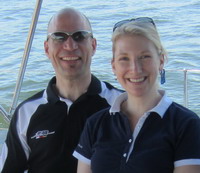
Milena & John Ryan
Authors, Love Decanted
Wine Blogger & Sommelier
Pam Chiles
Wine & Food Blogger
Sean O’Regan
Director, National Capital Sommelier Guild
Sylvain Segard
Accredited Sommelier
Terry Jeans
Wine Blogger, Ottawa Wine Guide
















